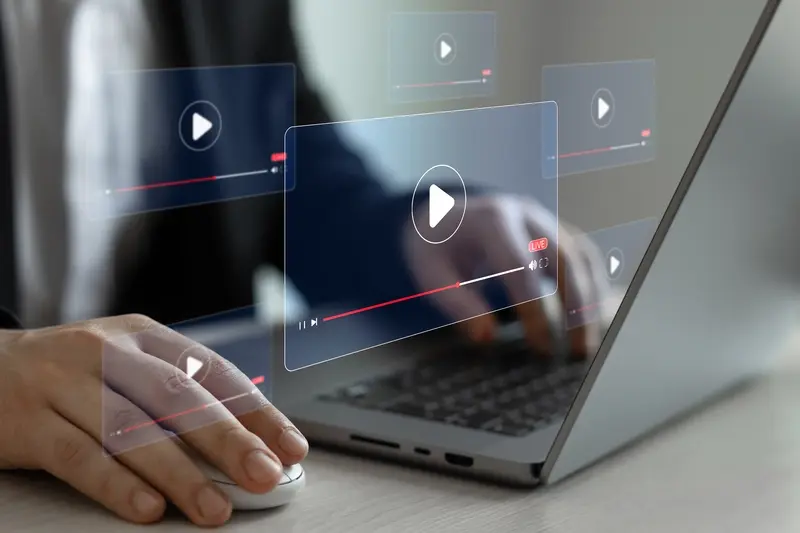What Type Of Content Should I Create To Promote My Mobile App?
Every day, around 6,000 new mobile apps land in the App Store and Google Play. That's roughly one new app every 14 seconds. Your brilliant app might be the next big thing, but without the right content strategy, it could easily get lost in that endless sea of competition.
Building a great mobile app is only half the battle—getting people to discover it, download it, and actually use it is where the real challenge begins. You need content that cuts through the noise and speaks directly to your potential users. But what kind of content actually works? And how do you create it without wasting time and money on things that don't move the needle?
The best mobile apps aren't just well-designed; they're well-promoted through strategic content that connects with real people solving real problems.
This guide will walk you through everything you need to know about creating content that drives genuine app downloads and user engagement. We'll cover the foundations of content strategy, explore different content formats that work, and show you how to measure what's actually working. Whether you're launching your first app or trying to breathe new life into an existing one, you'll find practical advice that you can start using straight away.
Understanding Your App's Content Goals
Before you start creating any content for your mobile app, you need to work out what you're actually trying to achieve—and I mean really think about it, not just a quick "we want more downloads" answer. After working with hundreds of app developers over the years, I can tell you that the ones who succeed are those who get crystal clear on their content goals from the start.
Your content goals should align with your app's main purpose and target audience. Are you trying to educate people about a problem your app solves? Do you want to show off cool features that make your app stand out? Maybe you're focusing on building trust with potential users who've never heard of your brand before. Each of these requires a completely different approach to content creation.
Defining Your Primary Objective
Start by picking one main goal—not three or four, just one. This might be increasing app store visibility, driving direct downloads, or building brand awareness. Once you've nailed down your primary objective, you can work backwards to figure out what type of content will actually move the needle.
Knowing Your Audience Inside Out
Your content goals mean nothing if you don't understand who you're creating content for. Spend time researching your target users; what problems do they face, where do they hang out online, and what type of content do they already engage with? Understanding who your target audience is will shape every piece of content you create moving forward.
Building Your Content Strategy Foundation
After working with countless mobile app developers over the years, I've noticed that most people jump straight into creating content without laying the groundwork first. Big mistake! Your content strategy foundation is what separates successful app promotions from those that fall flat—and trust me, I've seen plenty of both.
The foundation starts with understanding your audience inside and out. Who are they? What problems does your mobile app solve for them? Where do they spend their time online? These aren't just nice-to-know details; they're the building blocks of your entire digital marketing approach.
Know Your Content Pillars
Your content pillars are the main themes that all your content will revolve around. For a fitness app, these might include workout tips, nutrition advice, and motivation. For a productivity app, you might focus on time management, organisation, and work-life balance.
- Educational content that teaches users something new
- Problem-solving content that addresses user pain points
- Behind-the-scenes content that builds trust and connection
- User-generated content that showcases real results
Create Your Content Calendar
Planning ahead saves you from scrambling for content ideas later. Map out your content across different platforms and formats—blog posts, social media updates, videos, and app store materials all need to work together as part of your broader strategy.
Start with just three content pillars and expand gradually. It's better to create quality content around fewer themes than to spread yourself too thin across too many topics.
Creating App Store Optimisation Content
Your app store listing is probably the most important piece of content you'll create for your mobile app. I've watched countless brilliant apps get buried in the app stores simply because their developers treated the listing as an afterthought—and that's a mistake you can't afford to make.
Your app title needs to be clear and include your main keyword, but don't stuff it full of terms that make no sense. Apple and Google are smart enough to spot keyword stuffing from a mile away. Your description should explain what your app does in plain English; save the fancy marketing speak for somewhere else.
Screenshots That Actually Work
Screenshots are where most people make their download decision, so make them count. Show your app in action rather than just pretty static screens. Include text overlays that explain the key benefits—remember, people are scrolling quickly and won't study every detail.
Getting Reviews and Ratings
Reviews and ratings directly impact your app store ranking, but asking for them at the wrong time annoys users. The best approach is to ask after someone has had a positive experience with your app—maybe after completing a task or reaching a milestone. Timing is everything here, and getting it right can make the difference between a one-star review and a five-star one. For more detailed guidance, check out how to get your app discovered in the app store.
Developing Social Media Content That Converts
Social media can make or break your mobile app's success—I've seen brilliant apps fail because they got their social strategy wrong, and average apps thrive because they understood how to connect with their audience. The key isn't posting constantly; it's posting the right content that actually makes people want to download your app.
Start with platform-specific content rather than copying the same post everywhere. Instagram loves behind-the-scenes shots of your development process and quick app demos in Stories. TikTok users want entertaining, snackable content that shows your app solving real problems. LinkedIn works best for business-focused apps with professional use cases.
Show, Don't Just Tell
Screenshots are nice, but screen recordings showing your app in action perform much better. People need to see the actual user experience—how smooth your animations are, how intuitive your interface feels, what problems it solves in real-time.
The best social media content for apps doesn't feel like advertising; it feels like a helpful friend showing you something cool they discovered
User-Generated Content Works
Once you have some early users, encourage them to share their experiences. Repost their content, create hashtags, run challenges—anything that gets real people talking about your app naturally. This builds trust far more effectively than any promotional post you could create yourself.
Using Video Content to Showcase Your App
Video content has become the most powerful way to show people what your app can do—and I mean really show them, not just tell them. When someone watches a video of your app in action, they get it straight away. They see exactly how it works, how it looks, and most importantly, how it could fit into their life.
The best part about video content is that it works everywhere. You can use it on your app store listing, share it on social media, embed it in blog posts, or even use it in paid advertising. It's like having one piece of content that does multiple jobs.
Types of Video Content That Work
Not all videos are created equal when it comes to promoting your app. Some work better than others, and knowing which ones to focus on can save you time and money.
- App demo videos showing the main features in action
- Quick tutorials explaining how to use specific functions
- User testimonials from real people who love your app
- Behind-the-scenes content showing your development process
- Problem-solving videos that show your app fixing common issues
Keep It Short and Sweet
People have short attention spans online—especially when they're scrolling through social media. Your videos should get to the point quickly and show the most impressive parts of your app first. Think 30 seconds for social media, maybe 60-90 seconds for app store videos.
Writing Blog Posts and Articles That Drive Downloads
Blog posts and articles are brilliant for showing off your app's value without being pushy about it. I've watched countless apps gain traction through smart content that actually helps people rather than just shouting "download me!" at everyone.
The secret is solving real problems your target users face. If you've built a fitness tracking app, write about beginner workout routines or healthy meal prep ideas—then naturally mention how your app helps with tracking progress. People appreciate useful content and they'll remember you when they need what you're offering.
Types of Content That Work Well
- How-to guides related to your app's purpose
- Industry insights and trends
- Problem-solving articles
- User success stories and case studies
- Behind-the-scenes development stories
- Tips and tricks in your app's niche
Search engines love fresh, helpful content, which means more people will find your app organically. Write in a conversational tone—imagine you're explaining something to a mate over coffee. Keep paragraphs short, use bullet points when listing things, and always include a clear call-to-action at the end.
Focus on one main topic per article and weave in your app's benefits naturally throughout the content rather than cramming everything into a hard sell at the end.
Guest posting on relevant blogs and publications can massively expand your reach. Look for websites your target audience already reads and pitch them valuable content ideas that showcase your expertise. For more insights, explore the best content strategies for mobile app developers.
Measuring Your Content Marketing Success
After spending weeks creating brilliant content for your mobile app, you'll want to know if it's actually working. I've watched countless app developers create amazing videos and blog posts, only to never check if anyone's actually downloading their app because of it—don't make that mistake!
The good news is that measuring your content marketing success isn't rocket science. You just need to track the right numbers and understand what they mean for your app's growth.
Key Metrics That Actually Matter
Start by tracking these numbers each week; they'll tell you everything you need to know about your content's performance:
- App downloads from content links
- Website traffic from social media posts
- Video views and engagement rates
- Blog post shares and comments
- Email sign-ups from content offers
- App store listing visits from your content
Tools to Make Your Life Easier
Google Analytics will show you which blog posts drive the most app downloads—this is pure gold for understanding what content works. Social media platforms have built-in analytics that reveal which posts get people clicking through to your app store listing.
Most importantly, track your app download numbers weekly and see how they change when you publish new content. If downloads spike after a particular video or blog post, you've found your winning formula. Make more content like that!
Conclusion
Creating content to promote your mobile app doesn't have to be complicated—but it does need to be strategic. Throughout this guide, we've covered everything from understanding your app's content goals to measuring your success, and if there's one thing I hope you take away it's this: consistency beats perfection every time.
Your content strategy should work like a well-oiled machine where each piece supports the others. Your app store optimisation helps people find you; your social media content builds trust and engagement; your video content shows your app in action; and your blog posts establish you as an expert in your field. When these elements work together, they create a powerful system that drives downloads and keeps users engaged.
Don't try to do everything at once though—that's a recipe for burnout. Start with one or two content types that feel most natural to you and your team, then gradually expand as you find your rhythm. The mobile app market is competitive, but with the right content strategy and a bit of patience, you can cut through the noise and connect with the people who need your app most.
Share this
Subscribe To Our Learning Centre
You May Also Like
These Related Guides

What's the Best Content Marketing Strategy for App Developers on a Budget?

What Makes App Tutorial Content That People Actually Want To Watch?



